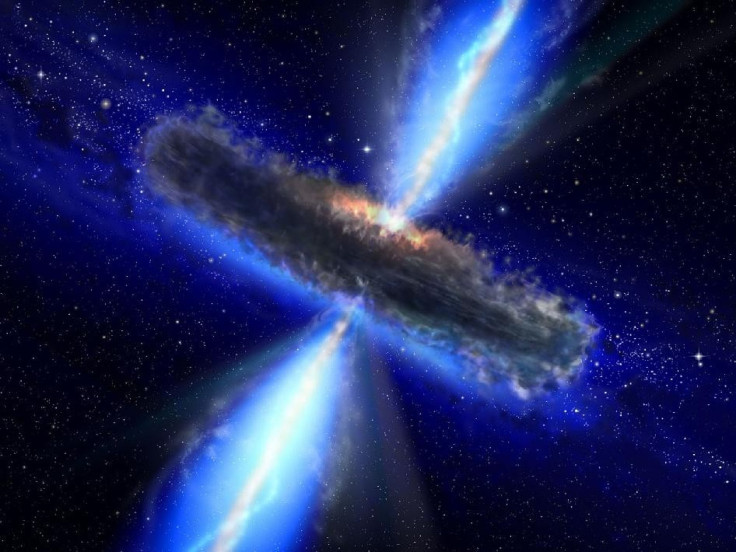Universe's Largest Source of Water Equal to 140 Trillion Earth Oceans

The celebrated vastness of Earth's oceans looks more like a droplet compared to a remote supermassive blackhole that contains 140 trillion times as much water.
The massive reservoir was discovered at the center of a quasar, which contains a black hole 20 billion times more massive than the Sun. The quasar is 12 billion light years away, which means that the water has existed since the universe was 1.6 billion years old -- relatively young on an astronomical timeline.
"The environment around this quasar is unique in that it's producing this huge mass of water," Matt Bradford from NASA's Jet Propulsion Laboratory said in a press release.
The quasar was located by two teams of astronomers led by scientists at the California Institute of Technology, using instruments that can detect miniscule gradations of wavelengths, millimeter and submillimeter wavelengths that can detece trace gases -- including, in this case, water vapor -- in the early universe. Studying these wavelengths allows astronomers to find ancient galaxies.
By contrast, the water in the Milky Way is mostly frozen, not vaporous, and is found in a few regions measuring only a few light years across. The quasar also contains about 4,000 times as much water.
To get another sense of the scale of the universe: not only did it take the light from this quasar 12 billion years to reach the earth, it also emits as much energy as a thousand trillion suns. A quasar is powered by an enormous black hole that steadily consumes a surrounding disk of gas and dust, sending out tremendous amounts of energy as it does so. Astronomers believe this one contains enough gas to grow about six times larger, although some of that gas could form new stars.
One of the two teams made their observations starting in 2008, using an instrument called "Z-Spec," a 33-foot telescope at the California Institute of Technology's Submillimeter Observatory near the summit of Mauna Kea in Hawaii, and with an archipelago of radio dishes in Southern California called the Combined Array for Research in Millimeter-Wave Astronomy (CARMA). The second group used the Plateau de Bure Interferometer in the French Alps to find the water.
© Copyright IBTimes 2024. All rights reserved.





















